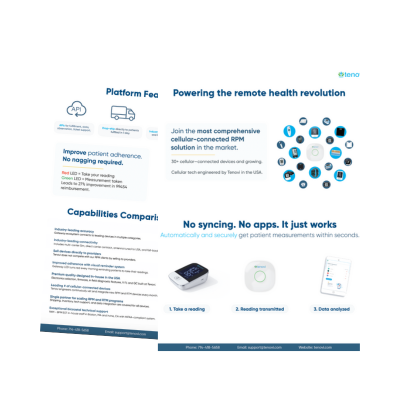Remote monitoring for chronic pain is gaining traction as digital health leaders search for ways to capture more accurate, continuous patient data. Chronic pain is highly variable, with symptoms shifting day to day. It can make it difficult to assess through traditional scales and infrequent check-ins.
A recent review from Harvard Medical School’s Brigham and Women’s Hospital highlights how combining patient-reported outcomes with continuous physiologic data could create a clearer, real-time picture of pain, and reshape both care models and reimbursement strategies. Read the full study here.
1. Remote Monitoring for Chronic Pain as a Data Bridge
Digital health has long promised “data-driven care,” but chronic pain management has lacked reliable, continuous measures. Remote monitoring for chronic pain blends:
- Remote Therapeutic Monitoring (RTM) for patient-reported symptoms, adherence, and functional status.
- Remote Physiological Monitoring (RPM) for vital signs, activity, and sleep data.
When combined, these data streams create a dynamic profile of the patient’s condition, revealing patterns, triggers, and opportunities for early intervention. This approach supports predictive care models, palliative care, proactive outreach, and stronger positioning in value-based contracts.
2. Making Remote Monitoring for Chronic Pain Actionable
Continuous data can overwhelm providers if not managed properly. Successful remote monitoring for chronic pain programs require:
- Automated triage to surface only meaningful deviations
- Integration with EHR workflows to avoid separate logins or duplicate data entry
- Clear escalation protocols to ensure timely follow-up
Some organizations are outsourcing monthly data summaries to third-party services that distill trends and key changes. This reduces provider burden, increases adoption, and keeps the focus on actionable insights rather than raw data.
3. Codes, Pitfalls, and Growth Potential
Deploying remote monitoring for chronic pain also requires a billing pathway that is clear, compliant, and sustainable for clinical partners. RTM and RPM each have their own CPT codes, but many chronic pain programs may lose revenue or bill incorrectly because they:
- Don’t meet the 16-day minimum data transmission requirement in a 30-day period
- Attempt to bill both RTM and RPM for the same patient in the same month under one provider
- Miss the opportunity to pair remote monitoring for chronic pain with chronic care management or behavioral health integration codes
4. Real-World Examples from the Study
Wearable Data Matching Pain Events
A patient with chronic low back pain wore an Oura Ring for two years, tracking heart rate, heart rate variability, respiratory rate, step count, and sleep duration. These physiologic trends closely matched the patient’s self-reported pain levels, including a significant increase in daily step count following a surgical intervention (L4/5 microdiscectomy).
Predicting Pain with Machine Learning
In a small cohort of patients using spinal cord stimulators for low back pain, physiologic data from an Apple Watch was paired with self-reported pain scores to build machine learning models. These models successfully predicted daily pain levels, opening the door to proactive intervention before flare-ups occurred.
5. Chronic Pain As a Test Case for Broader Remote Monitoring
If remote monitoring for chronic pain proves effective, it could be adapted for other conditions with fluctuating symptoms, such as:
- Migraine
- Long COVID
- Post-surgical recovery
- Behavioral health relapse prevention
For innovators and investors, chronic pain offers a high-bar proof point — success here validates your platform for multiple clinical markets.
Understanding Remote Monitoring for Chronic Pain
Remote monitoring for chronic pain now has the technology, billing pathways, and early evidence to support broad adoption. The next step is leadership that can align these elements into a scalable, outcome-focused model. Organizations that act now have the chance to set the standard for how fluctuating conditions are monitored, predicted, and managed, turning pain data into meaningful, actionable care.




